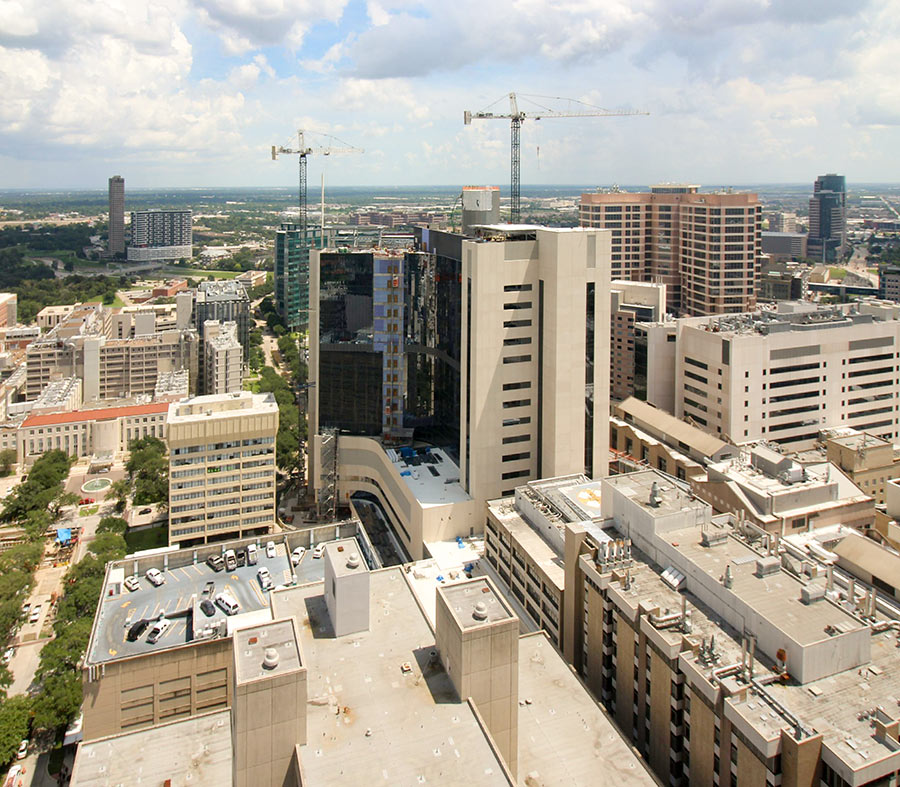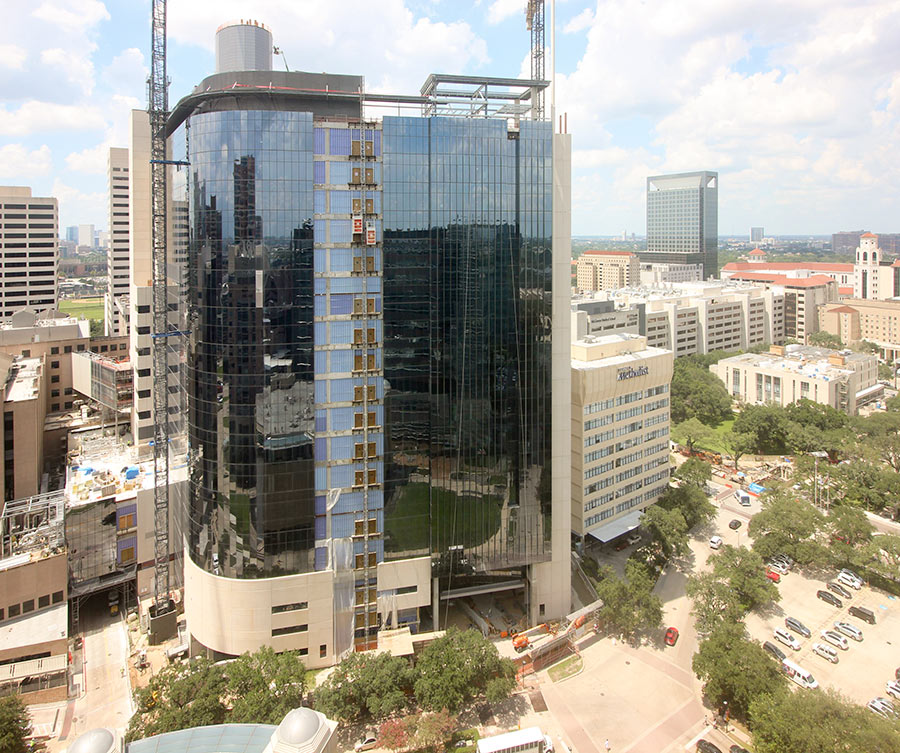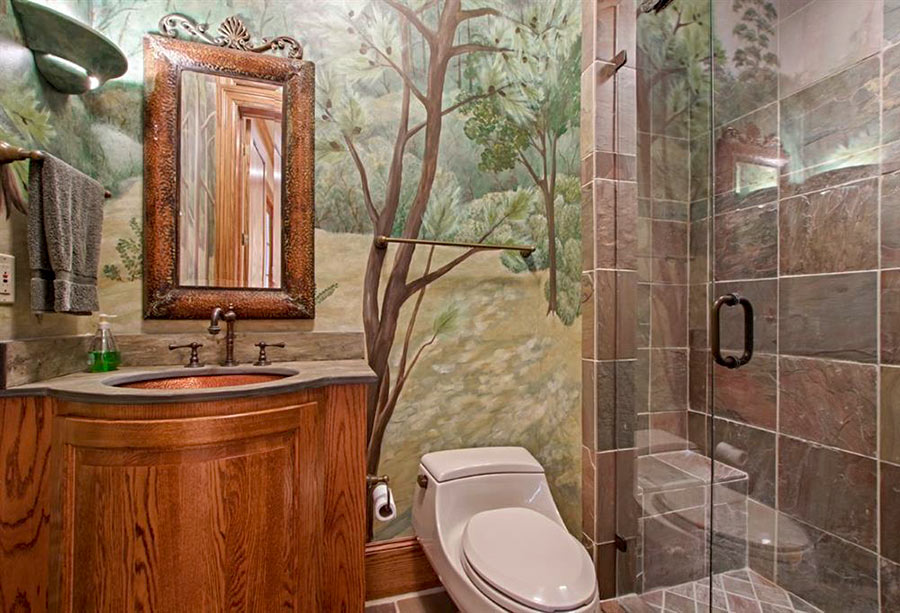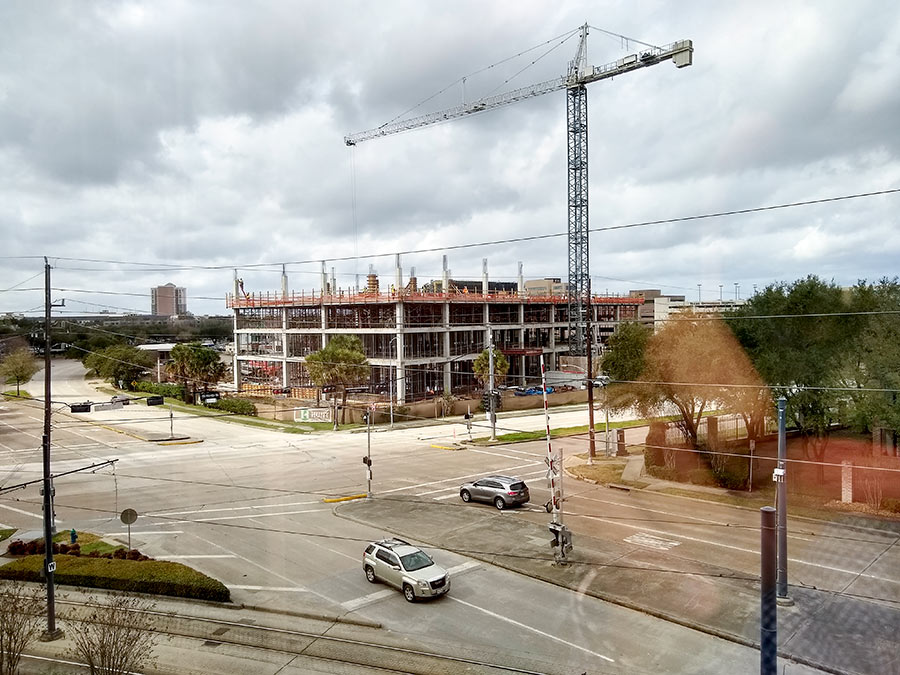If a year or so from now you find yourself holed up in acute or intensive care in the North Campus Tower of the Houston Methodist hospital in the Texas Medical Center and for some reason start to wonder how that bathroom behind you was constructed, have we got a video for you! (It’s posted above.) It’s a time-lapse showing how workers from interior finishes contractor Marek pieced together 207 prefabricated restroom pods in the McCorvey Sheet Metal Works warehouse at 4800 Fidelity St. (just southeast of the intersection of I-10 and the East Loop), then shrinkwrapped and transported them, 1 or 2 at a time, to 6551 Bertner St., where they were they were lifted and dollied into place and hooked up to the building’s plumbing.
How’s construction on the $700 million, 960,000-sq.-ft. 22-story north tower Med Center expansion going so far? Here are a couple of views from today — from construction cams trained on the project:
***


Construction, led by builder AECOM/Hunt, is expected to be complete next year.
- Prefab PODs Are In Play In Healthcare Construction [Construction Citizen]
- Time-Lapse Video: Prefabricated Bathrooms for Healthcare Facility [Construction Citizen]





As a former homebuilder, working within the construction industry for over 40 years, I am trying to wrap my head around the use of these prefabs, and what if anything will be gained by this small amount of offsite construction mated to site built construction. While it is certainly a cute timelapse picture, what is to be gained. I read the related article linked and aside from notating the possibility of timesavings for the overall project, there seemed to be no real positives. The project manager could not even confirm that any timesavings were achieved. The construction of a project this large is a multi-year process, so it is hard to understand that there is anything real to be gained. I still remember that some 35-38 years ago there was a widespread belief in the site-built single family residential industry that, manufactured housing and modular manufactured structures were the wave of the future, and there was a rush by some of the largest SFD builders in the country to acquire manufacturers. None of it ever bore fruit, for a large variety of reasons.
@Wayne Agreed that benefits of prefab for SF construction have obviously not been borne out over the years (or we’d already see it everywhere). However, in this case for hospital construction, I can imagine one clear benefit – quality and contamination control. As a current home builder, I see pristine building material (everything from framing lumber to mill work), delivered on site, only to get sprayed by mud, debris, paint, etc. before it gets put into final building assembly, no matter how hard we try to keep everything tidy on job site. Building a module like this in a warehouse makes it much easier to control the process (flow of materials and people) to help avoid cross contamination of the environment as well as one trade’s work on others.
In theory it also gives you better QC.
Water + dark+ warm = mold and bacteria breeding grounds. So if you can do more to reduce the possibility of plumbing leaks you could cut down on the growth of potentially harmful mold and bacterias in a place where folks are likely the most vulnerable.
It seems like technology and process has gotten pretty good in terms of sanitizing solid VISIBLE surfaces in hospitals. If you’ve not seen the UV light robots they have now, look them up. But any space which cannot be easily reached but where people could come in contact would be a big risk. So plumbing and HVAC are probably the biggest places to focus energy on reducing future problems.
Both points are well taken and probably by some architect/engineers logic are the reasons for this type of off-site construction, but frankly if they are valid then I would think the argument should be made that then entire room construction would be modularized off-site construction, since the typical patient spends far more time in the room than the restroom. Also, I for one would never consider sheetrock as the appropriate wall finish material if mold is of any concern, since it presents one of the best mold growing environments available.